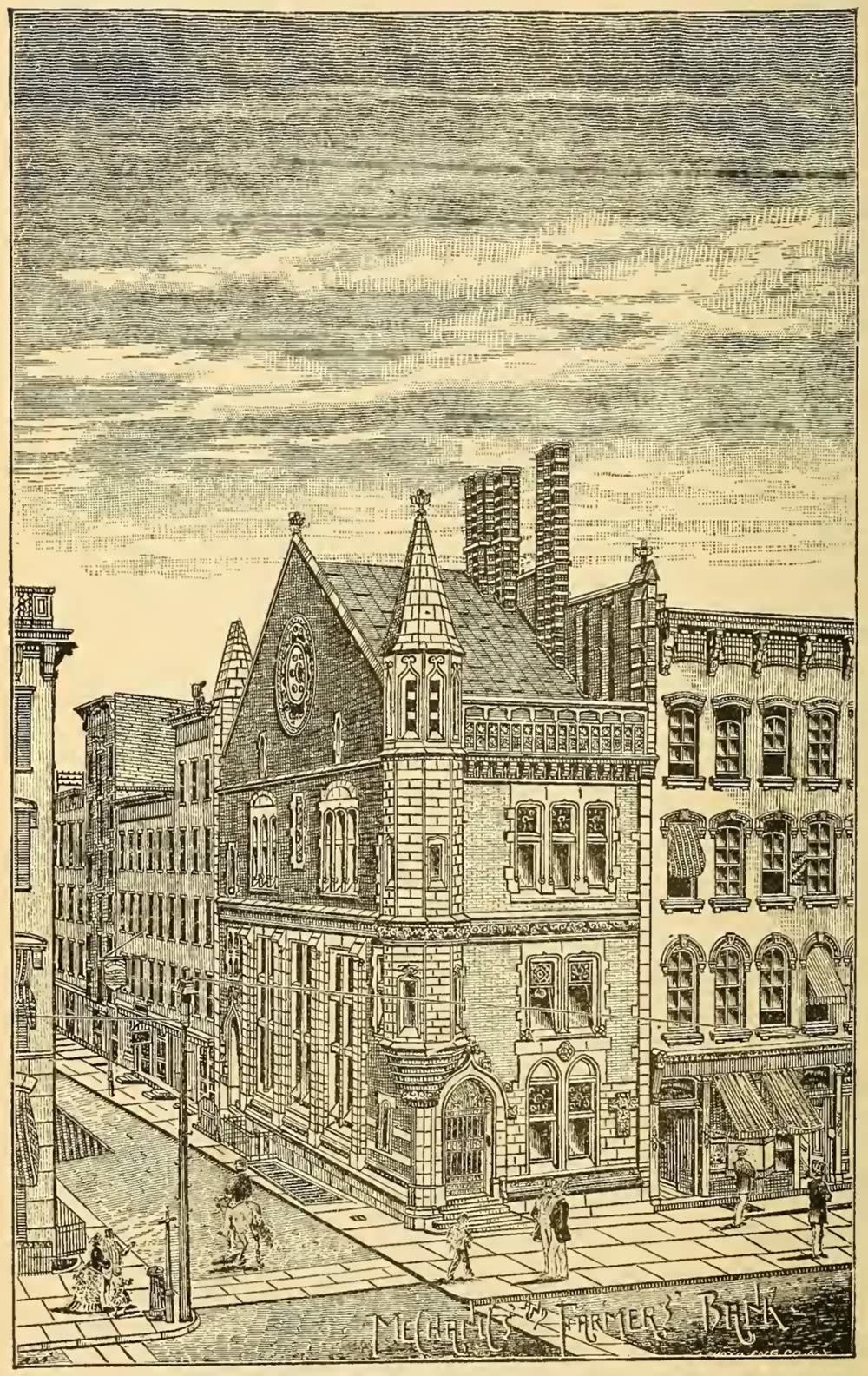A downtown corner in context

Albany is an old city, and it has a lot of old buildings. For all sorts of reasons, many of these old buildings are missing their architectural neighbors. And the resulting effect is that sometimes buildings appear like a fragment of conversation heard without context.
The old Mechanics and Farmers Bank building at the corner of State and James in downtown Albany is a prime example. It's a beautiful old building. It also looks odd, standing there all skinny and by itself. (Here's a thing we wrote about the history of the building.)
But it only looks like that way because the buildings around it are missing. And that's why we were delighted to see the above illustration today.
It's from the 1884 The History of The City of Albany, New York by Arthur James Weise. Credit to Albany Archives for surfacing it today on Twitter. (Matt has a "Lincoln in Albany" walking tour downtown this Thursday, by the way.)
From the illustration you can see how the building, designed by Russell Sturgis, once served as the corner piece of two intersecting rows of downtown buildings. It still stands out as a beauty, but it makes a more sense.
Oh, and here's the snippet from Weise about the founding of the bank...
The incorporation of a third bank was the subject of considerable discussion in the newspapers in March, 1811. The projectors of the institution having petitioned the legislature to pass an act incorporating them and their associates as a company under the name of the Mechanics' and Farmers' Bank, the Albany Register thus speaks of their application:
"Those who apply for this institution are generally mechanics and middling traders, whose wealth is the fruit of their honest industry, and whose talents and integrity in their pursuits entitle them to the patronage of an enlightened legislature. * * * To our fellow mechanics then, of the city of Albany, we recommend a cordial union in support of an institution calculated for their good, and for the fairness and liberality of whose operations they have a sufficient pledge in the integrity of those with whom the plan originated, who have brought it to its present state of maturity, and have been the first to step forward and claim for it the sanction of the legislature. It is no child of party, no offspring of monopolizing speculation, but has its origin solely in a regard for the common good of those who if they did not protect their own rights, will look in vain for their protection from any other source."
The petition of the projectors was complied with, and the legislature, on the twenty-second of March, 1811, passed "an act to incorporate the stockholders of the Mechanics' and Farmers' Bank in the city of Albany." The name under which the institution was to do business until the first of June, 1831, was that of "the president, directors and company of the Mechanics' and Farmers' Bank in the city of Albany." The bank was to be under the management of thirteen directors, "a majority of whom, at least," were to "be practical mechanics." The directors were required by the act to elect one of their number annually as president of the bank, who was to be a mechanic. The capital stock, exclusive of that subscribed by the state, was not to exceed six hundred thousand dollars. The first directors named in the act were: Benjamin Knower, John Bryan, Elisha Dorr, Solomon Southwick, Spencer Stafford, Isaac Denniston, Benjamin van Benthuysen, William Fowler, George Merchant, Thomas Lennlngton, Giles W. Porter, Willard Walker, and Walter Weed. [pdf p. 497]
Say Something!
We'd really like you to take part in the conversation here at All Over Albany. But we do have a few rules here. Don't worry, they're easy. The first: be kind. The second: treat everyone else with the same respect you'd like to see in return. Cool? Great, post away. Comments are moderated so it might take a little while for your comment to show up. Thanks for being patient.
Comments
They could sure turn a phrase in the 1800's.
... said Bob on Jul 23, 2018 at 2:44 PM | link
There are other consequences when a building loses its neighbor.
The next structure on State between Mechanics and Farmers and Broadway is 41 State, a 60s era office building that was hideously disfigured when the adjoining buildings it was built next to came down.
The exposed surfaces, absent of windows or decorative facing, make for one of downtown's ugliest sights. Nobody was ever supposed to see those parts of the building, and apparently, nothing has aver been done to improve its appearance.
... said Rob on Jul 24, 2018 at 1:47 PM | link